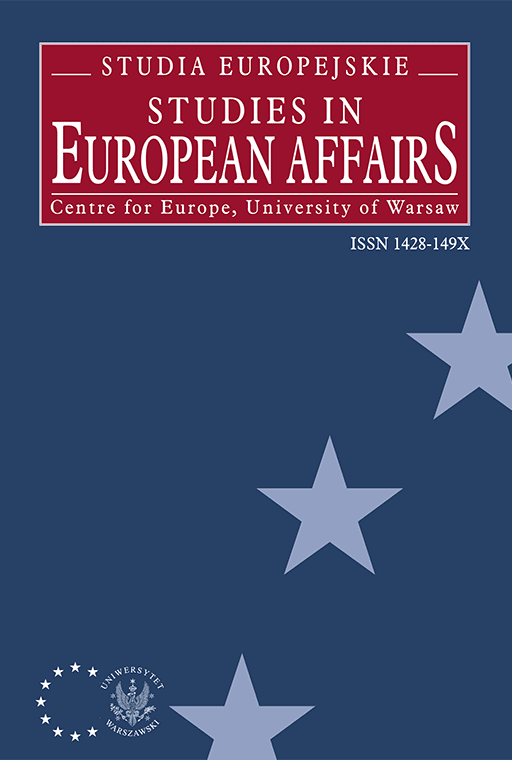
ISSUE: 1/2008
- Volume 45
- Number 1
- 2008
Subscribe NEWSLETTER
Studia Europejskie –
Studies in European Affairs
ISSN: 1428-149X
e-ISSN: 2719-3780
License
Articles published in the journal are under a Creative Commons Attribution – Non Commercial – No Derivatives 4.0 International License
Stosunek Grupy Siedmiu do Europy Środkowej i Wschodniejw okresie zimnej wojny oraz w czasie transformacji ustrojowej
The G7 attitude towards Central-and-Eastern Europe during the Cold War and at the time of the system transformation
Abstract
The collapse of the Bretton Woods monetary system and the first oil crisis were the most important reasons for establishment of the G7. Final decision to hold the first meeting of the most industrialized powers was made in Helsinki, during the Conference on Security and Cooperation in Europe. The very first summit in which six States took part was held in Rambouillet in 1975. The name G7 became official in 1976 when Canadian participants joined representatives of France, Germany, Great Britain, Italy, Japan and the US. Transformation into G8 formally took place in 1998, at Birmingham summit, after several years of negotiation and common work with Russia (G7 plus Russia). Economic declarations and summit communiqués included recommendations for members of the group and proposals to regions of the world. These various documents covered a broad range of subjects: macroeconomic policy; trade and monetary system issues; new financial architecture; energy issues; North-South and East-West relations; environmental, international and global political problems along with many regional issues.
The aim of this article is to present the attitude of G7 towards CentralEastern Europe, including an analysis of relations with the Soviet Union (since 1991 Russia) and other States politically and economically dependent upon Moscow during the Cold War period. The strategy of G7 in the years 1975-1988 was different than during the system transformation in the 1990s when Eastern European region started to open up towards the West and turn into market economies and democracy. Russia’s integration with G7 was not included as a broad subjects that has to be addressed on its own. However, other relations with Russia were taken into account as a part of the G7 strategy towards the whole region. All the problems were analysed from political and economical points of view.
Language: Polish
Pages: 51-74
How to Cite:
Harvard
Matera, R. (2008) "Stosunek Grupy Siedmiu do Europy Środkowej i Wschodniejw okresie zimnej wojny oraz w czasie transformacji ustrojowej". Studia Europejskie – Studies in European Affairs, 1/2008, pp. 51-74.